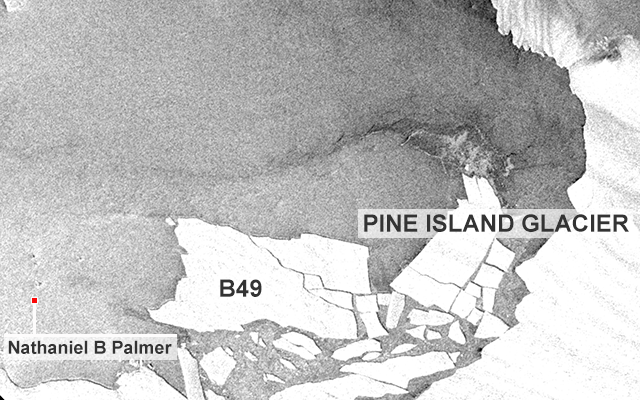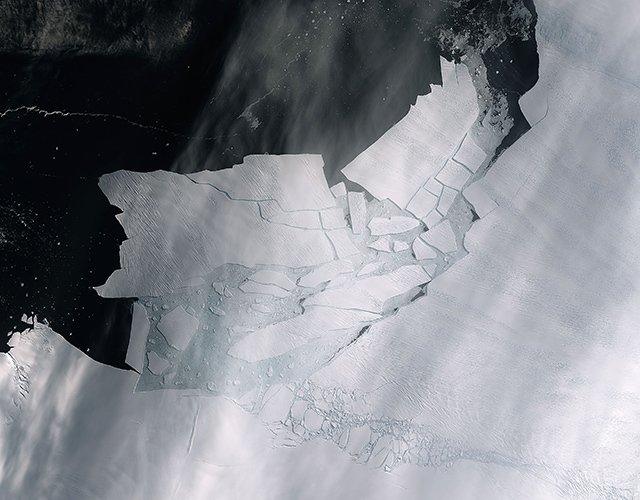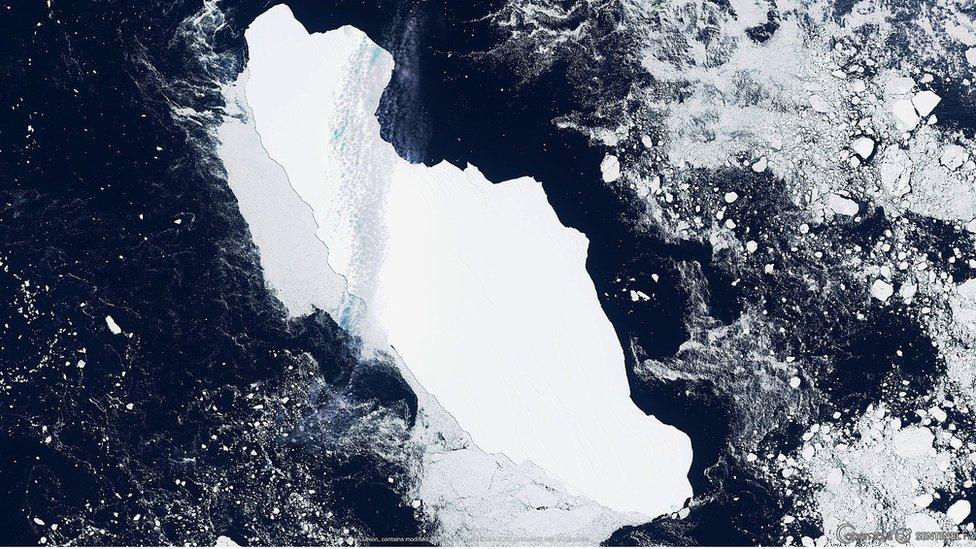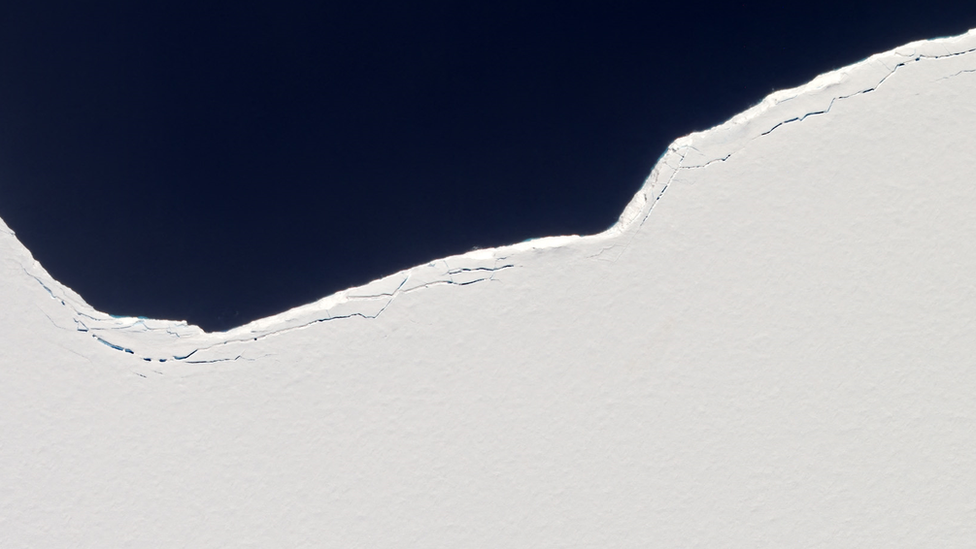Antarctica's big new iceberg: Up close with B49
- Published

B49 was pictured from the deck of an American research vessel
A US research ship is the first vessel to encounter the giant new iceberg knocked off the edge of Antarctica.
The RV Nathaniel B Palmer passed within a few kilometres of B49, as it's been designated - the largest of a group of ice fragments ejected by Pine Island Glacier (PIG) over the weekend.
B49 itself covers just over 100 sq km; the other pieces total about 200 sq km.
Dr Robert Larter, external took a picture of the big berg from the deck of the Palmer, which he then posted on Twitter.
The British Antarctic Survey scientist is part of a major US-UK expedition that is investigating the nearby Thwaites Glacier.

The Palmer was just a few km away (Ship position from @BigOceanData)
Both streams - PIG and Thwaites - move enormous amounts of ice off the west of the continent into the Amundsen Sea.
The fronts of these glaciers actually float where they meet the ocean, even though they are hundreds of metres thick. And every so often, the leading edges will calve great chunks of ice.
Researchers have become concerned at the speed with which the PIG and Thwaites are losing ice.
Satellite records show the glaciers have speeded up in recent decades. They've also thinned and their fronts have pulled back towards land. Warm ocean water is said to be infiltrating the glaciers' undersides and melting them.

B49 is the largest among a group of fragments ejected at the weekend
In addition, the PIG appears to be calving bergs at an accelerating rate.
Dr Larter said B49 and its "PIGlets" represented the seventh large tabular iceberg calving event from Pine Island Glacier this century. A tabular berg is big, wide and flat.
"The interval between them is decreasing," he wrote on Twitter. "Sequence since November 2001: 71 months, 73 months, 22 months, 25 months, 15 months, 14 months."
The Palmer ship is trying to learn about the history of Thwaites Glacier on its present cruise.
It's collecting seafloor sediments, which, when they're inspected in the lab, should reveal details such as the past position of the front of the glacier and the climate conditions that persisted at the time.
This is work that can help scientists forecast how much the likes of the PIG and Thwaites could contribute to future sea-level rise if they continue to lose their ice.
As massive as B49 seems, it is dwarfed by a 5,000-sq-km colossus known as A68.
This broke away from the continent in 2017 and is now moving alongside the northern tip of the Antarctic Peninsula. It's being monitored closely by the Sentinel satellites, which are owned by the EU and operated by the European Space Agency, external.
All the major tabular bergs have to be tracked because of the risks they could pose to shipping.

At just over 5,000-sq-km, A68 is the biggest such object currently in Antarctica

A high resolution view of the edge of A68
Jonathan.Amos-INTERNET@bbc.co.uk and follow me on Twitter @BBCAmos, external